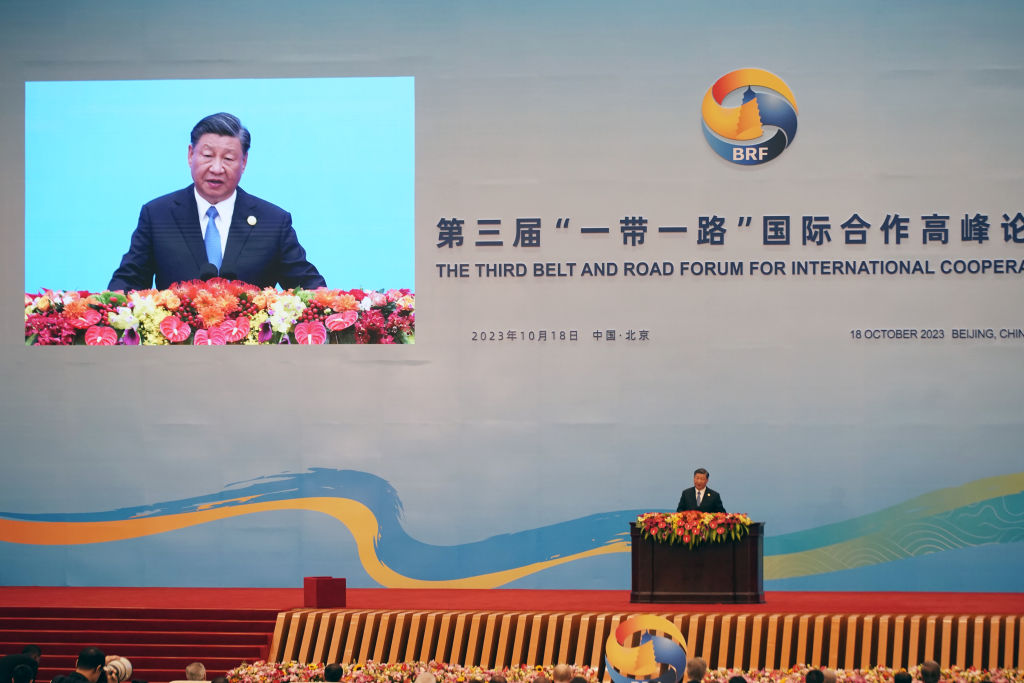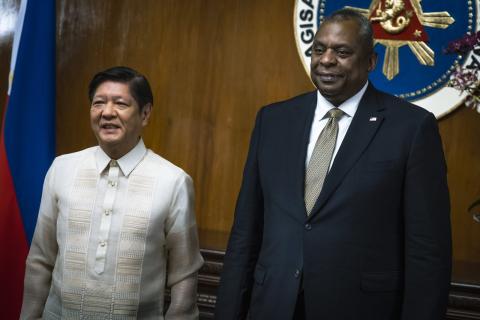The third Belt and Road Forum held in Beijing last month was a closely watched affair. Marking a decade since the launch of the trillion-dollar initiative, it was also the first high-level diplomatic event held in China since the pandemic.
There has been much speculation that the Belt and Road Initiative (BRI) was on the brink of collapse, reflecting a mix of project level difficulties, bad debts, and fading demand from developing countries. Yet the Forum offered important clues as to its future direction.
BRI has been evolving ever since it was badged in 2013, complete with numerous appendages in the digital, green and health spheres. At one stage, it look as if the Global Development Initiative might supplant the BRI – now it appears that they will act in parallel, with the BRI taking on a more commercial role.
China’s President Xi Jinping delivered an opening speech containing pledges of just under US$50 billion each for new financing windows at China’s two major development policy banks, China Development Bank and the Export-Import Bank of China, as well as about US$11 billion for the Silk Road Fund (the two banks happen to also be shareholders in the Fund). Additionally, Xi claimed that US$97.2 billion in new deals had been signed at the CEO Conference of the Forum – though details are scarce.
The new funding amount to just under US$110 billion over the next five years. Coincidentally, virtually the same amount was promised in 2017, which was arguably the peak of the initiative and the year the BRI was enshrined in the Chinese Communist Party’s constitution. Yet, the signs do not suggest a simple resurrection of the program.
Whereas China sought to pitch BRI 1.0 to both rich and developing economies, BRI 2.0 seems more squarely focused on the Global South, including key Western adversaries. Guest-of-honour status was conferred upon Russia’s Vladimir Putin while a delegation from the Taliban was also in attendance. Indeed, the only European leader present was Hungarian Prime Minister Viktor Orban, arguably the least popular figure in the room at any meeting of NATO or the European Union. There was no government representation from Italy, the only G7 member of the BRI, which is expected to withdraw from the initiative early next year. Notably missing, however, were the leaders of Brazil, India and South Africa, the other members of the BRICS grouping – suggesting BRI has indeed lost a good deal of its lustre, even within the Global South.

BRI 2.0 also appears to be learning from key mistakes made under its earlier pre-pandemic iteration.
The Forum produced several new policy directions. A white paper on the initiative accompanied what Xi dubbed “eight major steps China will take to support our joint pursuit of high-quality Belt and Road cooperation”. Issues such as worker safety and integrity and compliance have received attention. And while BRI will not step away from its signature transport infrastructure and logistics corridors, there is a clear emphasis on “small yet smart” projects and “greening the BRI”.
Especially noteworthy was a new Green Investment and Finance Partnership project preparation facility designed to address concerns over environmental impact and inadequate project due diligence which have to date plagued many BRI projects. A focus on technology and artificial intelligence also seems to be a key element, punctuated by the launch at the Forum of the Global Initiative for Artificial Intelligence Governance. There was also a suggestion of increased involvement of private companies, rather than principally state-owned ones.
But details on any new deals signed at the Forum are hard to come by. In keeping with the infrastructure megaproject tradition of the original BRI, there appears to have been an agreement on refinancing two railway projects in Nigeria, and building 1,300 kilometres of new railways over three years in Kazakhstan. Nothing has emerged yet on China’s response to the Kenyan request for an additional US$1 billion loan on top of $6.3 billion already owed in budget support and infrastructure debts, despite mounting concerns about the country’s debt capacity.
If this Forum is anything to go by, the BRI is not dead. Nor is it restored to its original form. Rather, it has evolved, with a narrowing focus and more refined offering to a potentially reduced group of participants. With news in recent days that one of the BRI’s original flagship projects, the East Coast Rail Link in Malaysia, is 50% complete despite years of delays and suspensions, and the recent completion of the Jakarta-Bandung High Speed Rail, one might even say, in a way, the BRI is back on track.


